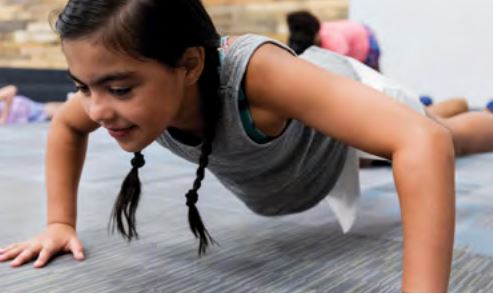Every day we make little decisions. We like this kind of music, we can’t wear clothes made out of wool, we need to exercise to relax.
But how did we learn these things? For many children, they are able to learn what sensory inputs they like and don’t like in their home. But for children who have suffered trauma and those living in residential housing, learning what sensory inputs they need to remain calm and what sensory inputs will trigger them is much harder.
St. Mary’s has started a new agency-wide program to help these children. Called the Sensory Connection Program, it was started by nationally-known occupational therapist Karen Moore.
The program begins with self-awareness and moves on to strategies for self-regulation, self-care, and self-healing – everyday life skills that children can use.
“It’s a way to help people manage their feelings. It helps with self-regulation, helping individuals identify what they are feeling and what to do about it,” said Kim Gilbert, an occupational therapist working as a consultant on the program. “It helps people feel more comfortable in their own skin. These are life skills that will allow the students to be on a bus, in a classroom, or at a job one day.”
For example, in one classroom at the George N. Hunt Campus School at St. Mary’s, a boy asks his teacher if he can “wear the hat.” She answers yes and he puts on a designated hat and goes into the hallway where he is allowed to run back and forth for a period of time. The hat signals to other staff that the boy is allowed to be running. Later on, the boy asks for the hat again and his teacher asks him to finish his math work first and then he can have the hat. He happily complies and remains calm and focused on his work while also getting his sensory needs met.
In another instance, teachers or parents might use sensory input to help a child who is normally sedentary or has low reactions to things, to be more alert and take part in activities.
Ultimately, the Sensory Connection Program is about a shared language to communicate what sensory inputs are needed and what ones need to be avoided. A child might say they need “some space,” before the program but after going through the programs be able to say they need “10 minutes of quiet” or “to do some pushups.” It sounds small but is actually a huge leap for children who haven’t had the chance to learn about their own needs for sensory inputs.
One of the main outcomes of a program like this is that the children learn to deescalate their own behavior, leading to better emotional regulation.
“We’re giving them skills that allow them to have a more calm, comfortable life,” said Gilbert. The Sensory Connection Program is generously funded by a grant from the CharterCARE Foundation.


Recent Comments